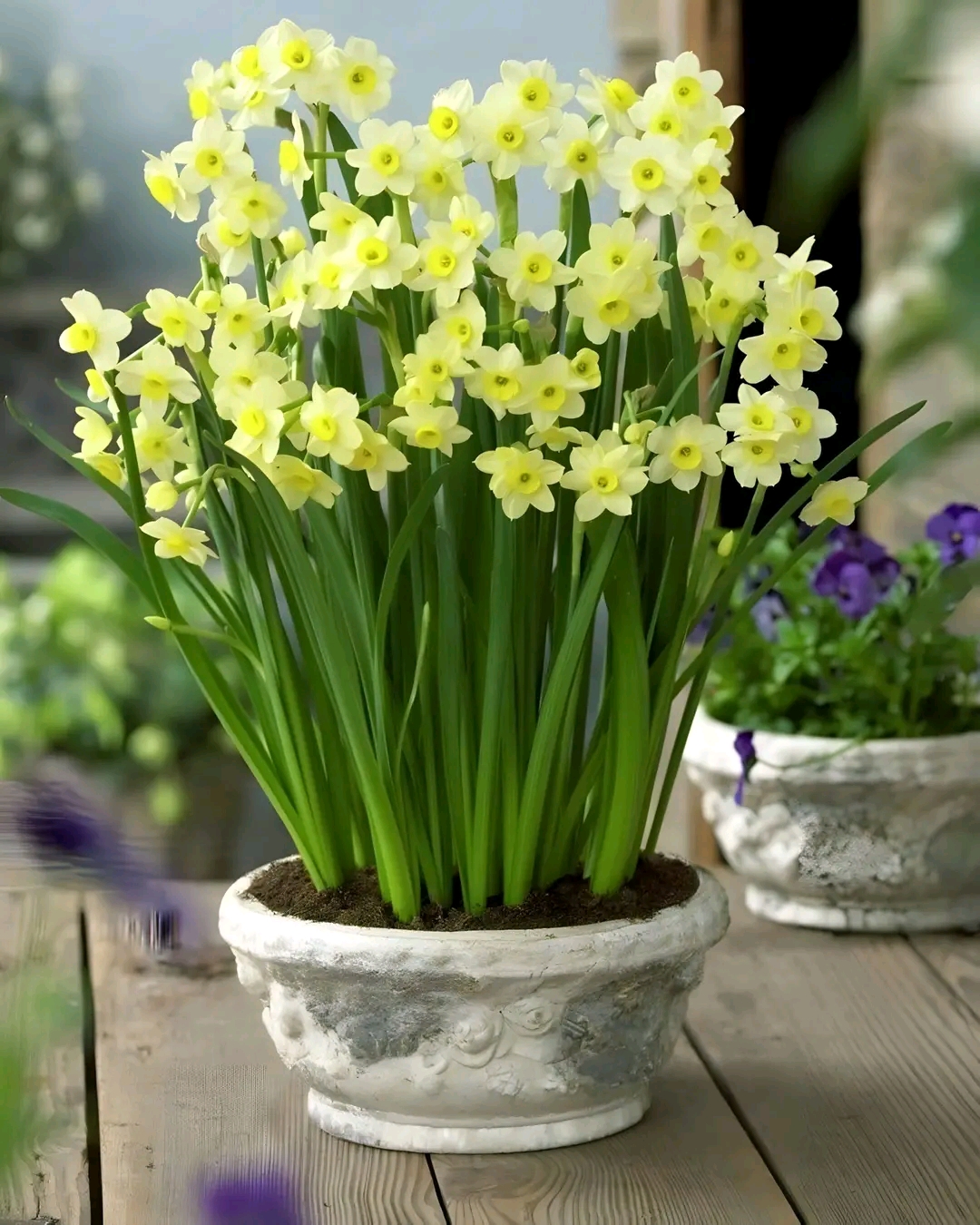Daffodils (Narcissus spp.) are among the most beloved spring flowers, heralding the arrival of warmer days with their bright, cheerful blooms. These hardy perennials are easy to grow, require minimal maintenance, and provide years of beautiful blooms with proper care. Whether planted in garden beds, naturalized in meadows, or showcased in pots, daffodils add a touch of elegance and charm to any landscape.
This guide will cover everything you need to know about growing and caring for daffodils, ensuring they thrive year after year.
Why Grow Daffodils?
✔ Easy to Grow: Daffodils are low-maintenance and thrive in a variety of conditions.
✔ Cold Hardy: They tolerate harsh winters and require a cold period for optimal blooming.
✔ Naturalizing Bulbs: Once planted, daffodils multiply naturally, creating bigger, more stunning displays over time.
✔ Deer & Pest Resistant: Unlike tulips or lilies, daffodils are toxic to deer, rabbits, and rodents, making them a safe garden choice.
✔ Vibrant Colors: While classic daffodils are yellow, they also come in shades of white, orange, pink, and even bi-colored varieties.
How to Grow and Care for Daffodils
- Light Requirements
☀ Full Sun to Partial Shade
Best Growth: Daffodils thrive in full sun (at least 6 hours of direct sunlight per day).
Partial Shade: They can tolerate some shade but may produce fewer blooms.
Under Trees: Daffodils can be planted under deciduous trees, as they bloom before the trees leaf out.
- Best Soil for Daffodils
✔ Well-Drained Soil: Daffodil bulbs rot in waterlogged soil, so proper drainage is crucial.
✔ Rich & Fertile: Adding compost or well-rotted manure at planting time improves soil quality.
✔ Soil pH: They prefer neutral to slightly acidic soil (pH 6.0-7.0).
- When to Plant Daffodils
🍂 Fall Planting (September – November)
Why Fall? This allows the bulbs to establish strong roots before winter dormancy.
Cold Requirement: Daffodils need chilling temperatures (35-45°F / 1-7°C) for 8-12 weeks to bloom properly.
- How to Plant Daffodil Bulbs
✔ Depth: Plant bulbs 4-6 inches deep (or 3 times the bulb’s height).
✔ Spacing: Space bulbs 4-6 inches apart to allow for natural spreading.
✔ Pointed End Up: Ensure the pointy tip faces upwards when planting.
✔ Water Thoroughly: After planting, water the area deeply to encourage root growth.
💡 Tip: For a natural look, scatter the bulbs randomly and plant them where they fall, rather than in straight rows.
- Watering Guide
✔ After Planting: Water deeply after planting to help bulbs settle.
✔ During Growth: Keep the soil consistently moist during spring blooming season.
✔ After Blooming: Reduce watering as foliage begins to die back (late spring).
💡 Avoid overwatering, as excess moisture can cause bulb rot.
- Temperature & Hardiness
🌡 Cold Hardy (USDA Zones 3-8)
Daffodils tolerate cold winters and warm springs.
In warmer climates (Zones 9-10), refrigerate bulbs for 8-10 weeks before planting.
- Fertilizing Daffodils
✔ At Planting: Use a balanced bulb fertilizer or bone meal.
✔ Early Spring: Apply a low-nitrogen fertilizer (5-10-10) as soon as green shoots appear.
✔ After Flowering: Apply fertilizer once more to help bulbs store energy for next year’s blooms.
💡 Avoid fertilizing after the foliage dies back, as the bulbs enter dormancy.
Caring for Daffodils After Blooming
- Deadheading (Removing Spent Blooms)
✔ Cut off faded flowers to prevent seed formation (which takes energy away from bulb growth).
✔ Do not cut the leaves! The leaves continue photosynthesis, helping the bulb store energy for next year’s blooms.
- Allow Foliage to Die Back Naturally
✔ Do NOT remove green leaves too early.
✔ Wait 6-8 weeks after blooming until the leaves turn yellow and wither naturally.
✔ You can plant companion plants (like daylilies or perennials) nearby to hide fading foliage.
💡 Removing leaves too soon results in fewer flowers next year!
Daffodil Propagation & Division
Daffodil bulbs multiply naturally, forming clusters over time. If your daffodils produce fewer blooms, it’s time to divide them.
How to Divide Daffodil Bulbs
✔ Best Time: Late summer to early fall (after the foliage has completely died back).
✔ How to Divide:
Carefully dig up the bulbs.
Gently separate offset bulbs (baby bulbs attached to the main bulb).
Replant the largest, healthiest bulbs at the correct depth.
💡 Daffodils need to be divided every 3-5 years to prevent overcrowding.
Common Daffodil Problems & Solutions
No Blooms (“Blind” Daffodils)
✔ Cause: Overcrowding, poor soil, or cutting leaves too soon.
✔ Solution: Divide bulbs, enrich soil, and allow leaves to die back naturally.
Yellowing or Drooping Leaves
✔ Cause: Overwatering or poor drainage.
✔ Solution: Improve soil drainage and reduce watering.
Pests & Diseases
✔ Rarely Affected by Pests! Daffodils are toxic to deer, rabbits, and rodents.
✔ Watch for fungal diseases (like basal rot). Prevent by planting in well-draining soil.
Beautiful Ways to Use Daffodils in Your Garden
🌼 Mass Planting: Create a stunning spring display by planting hundreds of daffodils in drifts.
🌿 Under Trees: Plant them under deciduous trees, where they bloom before leaves emerge.
🏡 Container Gardens: Grow daffodils in pots or window boxes for a cheerful spring patio.
🌻 Companion Plants: Pair with tulips, hyacinths, pansies, or primroses for a vibrant spring garden.
Final Thoughts: A Timeless Spring Favorite
Daffodils are one of the easiest and most rewarding spring flowers to grow. Their bright colors, hardy nature, and ability to return year after year make them a must-have in any garden. With minimal effort, you can enjoy years of cheerful blooms in your landscape.
🌼 Do you grow daffodils? Share your favorite varieties and tips in the comments!
